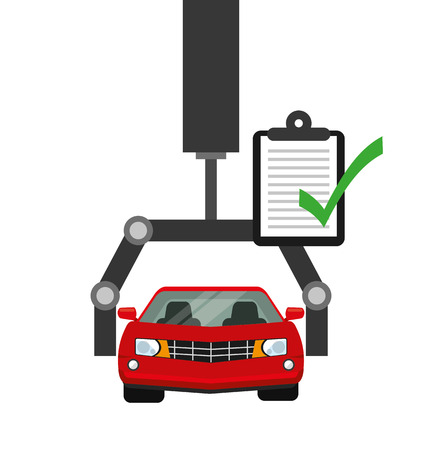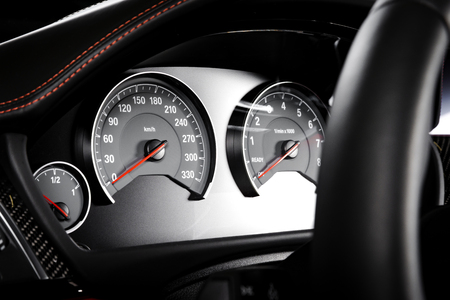1. Introduction
As modern electric vehicles (EVs) continue to evolve, software updates have become a crucial part of their performance and user experience. Unlike traditional gasoline-powered cars, EVs rely heavily on software to manage everything from battery efficiency to driver-assist features. Over-the-air (OTA) updates allow manufacturers to improve vehicle performance, fix bugs, and even introduce new features—all without requiring a visit to the dealership.
The Importance of Software Updates
Software updates play a vital role in enhancing various aspects of an EV. From improving battery management to enhancing safety features, updates ensure that EV owners get the best possible driving experience. Below is an overview of key areas impacted by software updates:
| Aspect | Impact of Software Updates |
|---|---|
| Battery Performance | Optimized charging cycles and efficiency improvements can extend battery life. |
| Vehicle Safety | Enhancements in automatic emergency braking, lane-keeping assistance, and other safety systems. |
| User Experience | Updated infotainment systems, improved voice recognition, and UI refinements. |
| Performance & Driving Dynamics | Power optimization, better acceleration, and smoother ride handling. |
How EVs Benefit from OTA Updates
One of the key advantages of EVs over traditional vehicles is their ability to receive updates remotely. OTA software updates allow manufacturers to continually refine vehicle performance, correct software glitches, and introduce new functionalities—without requiring physical modifications to the car. This significantly enhances the ownership experience by reducing the need for service center visits and ensuring that the vehicle stays up to date with the latest advancements.
Real-World Examples
Leading EV manufacturers like Tesla, Rivian, and Ford have successfully implemented OTA updates to enhance the driving experience. For instance, Tesla has rolled out updates improving battery range, self-driving capabilities, and even entertainment features such as in-car gaming. This level of continuous improvement showcases the growing significance of software updates in modern electric vehicles.
2. Types of Software Updates
Modern EVs rely on over-the-air (OTA) software updates to enhance performance, improve security, and introduce new features. These updates can significantly impact the vehicle’s driving experience, efficiency, and safety. Below is a breakdown of the different types of software updates that EV manufacturers provide.
Performance Enhancements
Performance updates focus on optimizing various aspects of an EV, including battery efficiency, acceleration, and energy consumption. Automakers can refine software that controls battery management, regenerative braking, and motor efficiency to maximize the vehicle’s range and responsiveness.
Security Patches
Like smartphones and computers, EVs require regular security updates to protect against vulnerabilities and cyber threats. These patches address potential weaknesses in the vehicle’s software, ensuring that hackers cannot access critical systems such as remote controls, charging protocols, or infotainment units.
Feature Upgrades
Feature upgrades introduce new functionalities or improve existing ones. They can range from user interface improvements in the infotainment system to entirely new driving assistance capabilities. Manufacturers can also add features like improved self-parking, enhanced autopilot modes, or better voice recognition.
Common Types of OTA Updates
| Update Type | Description | Examples |
|---|---|---|
| Performance Enhancements | Optimizes key vehicle operations for better efficiency and driving experience. | Battery management updates, acceleration tuning, improved regenerative braking. |
| Security Patches | Fixes vulnerabilities to protect against cyber threats. | Software encryption updates, firewall improvements, remote access protections. |
| Feature Upgrades | Adds or improves infotainment, driver assistance, and other vehicle functionalities. | New autopilot functions, UI updates, enhanced navigation. |
By utilizing OTA updates, EV manufacturers ensure that vehicles remain up to date with the latest technology, offering a safer and more efficient driving experience without requiring a visit to the service center.

3. Performance Optimization Through Updates
Software updates play a crucial role in maximizing the efficiency and performance of modern electric vehicles (EVs). Automakers regularly release updates that enhance battery efficiency, improve driving dynamics, and refine regenerative braking. These improvements ensure that EV owners continue to receive an optimized driving experience without needing to upgrade their hardware.
Enhancing Battery Efficiency
Battery management systems (BMS) in EVs control how energy is stored, used, and recharged. Software updates can optimize BMS algorithms, leading to better energy management and longer battery lifespan. These updates may include:
- Better thermal management to prevent overheating
- Enhanced charging protocols for faster and safer charging
- Improved battery balancing for consistent performance
By optimizing energy consumption, software updates help extend range and maintain battery health over time.
Improving Driving Dynamics
Driving dynamics, such as acceleration, handling, and overall responsiveness, can be fine-tuned through software updates. Automakers refine control systems to enhance vehicle stability and driver experience. Key updates include:
| Update Type | Effect on Driving Dynamics |
|---|---|
| Throttle Response Adjustment | Better acceleration control, smoother driving |
| Steering Calibration | More precise handling and improved maneuverability |
| Suspension Tuning | Enhanced ride comfort and stability |
These updates allow EVs to stay competitive by continuously enhancing their driving experience.
Refining Regenerative Braking
Regenerative braking is a key feature in EVs that converts kinetic energy into electrical energy to recharge the battery. Software updates help refine braking efficiency by:
- Making energy recovery more effective
- Providing smoother deceleration for a natural driving feel
- Allowing adjustable regen levels to suit driver preferences
More advanced regenerative braking through software updates means better energy savings and a more intuitive driving experience.
4. Enhancing User Experience
Software updates play a crucial role in improving the overall user experience of modern electric vehicles (EVs). These updates enhance various aspects of the vehicle, including the infotainment system, navigation features, and driver-assist systems. As a result, EV owners can enjoy a continually improving driving experience without needing to buy a new car.
Infotainment System Upgrades
One of the most noticeable improvements from software updates is in the infotainment system. Automakers regularly push updates to refine user interfaces, add new entertainment options, and optimize system responsiveness. Some common upgrades include:
| Feature | Possible Improvements |
|---|---|
| Touchscreen Responsiveness | Faster load times and improved gesture controls |
| Streaming Services | Additional apps like Spotify, YouTube, or Netflix |
| Voice Commands | More accurate voice recognition and expanded functionality |
| Over-the-Air (OTA) Gaming | New games and entertainment options for parked vehicles |
Navigation Enhancements
Software updates also refine the navigation system, making it more intuitive and useful. Updated maps, real-time traffic data, and EV-specific route planning are just a few of the improvements. Some key benefits include:
- Real-time Traffic Updates: More accurate traffic and road condition reports help drivers avoid congestion.
- Charging Station Integration: New software often adds charging station locations, availability status, and charging speeds directly into the navigation.
- Smarter Route Planning: EV-optimized route suggestions consider range, charging stops, and topography for better efficiency.
New Driver-Assist Features
Many automakers also use software updates to enhance or introduce driver-assist features, improving safety and convenience. These updates refine existing systems and sometimes even enable new capabilities. Some examples include:
| Feature | Software Enhancements |
|---|---|
| Autopilot & Assisted Driving | Refined lane-keeping, adaptive cruise control, and smoother automated braking |
| Parking Assistance | Improved automatic parking and more precise sensor accuracy |
| Blind Spot Monitoring | Added alerts, better detection range, and real-time visualization |
| Collision Avoidance | More responsive emergency braking and enhanced obstacle detection |
A Continuously Improving Driving Experience
Unlike traditional cars that stay largely the same after purchase, modern EVs benefit from continuous software improvements. These updates ensure that features remain cutting-edge, keeping the driving experience fresh and competitive without requiring hardware upgrades. As technology evolves, software updates will remain a key factor in defining the performance, comfort, and safety of electric vehicles.
5. Challenges and Future of EV Software Updates
Software updates play a crucial role in modern electric vehicles (EVs), but they also come with challenges that need to be addressed. As EVs rely more on software for performance enhancements, security, compatibility, and the future development of AI-driven optimizations and autonomous driving become key concerns.
Cybersecurity Concerns
One of the biggest challenges in EV software updates is cybersecurity. Since updates are often delivered over-the-air (OTA), hackers may attempt to exploit vulnerabilities. Automakers must implement robust encryption and security protocols to protect EVs from cyber threats.
Key Cybersecurity Challenges
| Challenge | Impact | Solution |
|---|---|---|
| Unauthorized Access | Hackers gaining control of vehicle systems | Implement multi-layer security authentication |
| Software Integrity | Risk of installing malicious or corrupted updates | Use cryptographic signatures for verification |
| Data Privacy | Leaks of driver behavior and personal data | Enhance data encryption and access controls |
Compatibility Issues
Another challenge is ensuring software updates remain compatible with different hardware configurations. As EV manufacturers release new models, older systems may struggle to handle modern software enhancements. Car companies must rigorously test updates to prevent performance drops, glitches, or system failures.
AI-Driven Optimizations
Looking ahead, AI-driven optimizations will play a larger role in EV performance. Artificial Intelligence can analyze driving patterns and battery usage to provide smarter energy management and route planning. These updates can help EVs become more efficient and adaptive to individual driving habits.
Future of Autonomous Driving Improvements
Software updates are also critical for advancing autonomous driving technologies. Over time, EVs will receive updates to improve self-driving capabilities, enhance object recognition, and refine decision-making algorithms. These updates will make autonomous vehicles safer and more reliable.
Upcoming Trends in EV Software Updates
- Enhanced AI for real-time driving assistance
- More predictive maintenance features
- Vehicle-to-everything (V2X) communication upgrades
- Faster OTA update delivery
As EV technology evolves, overcoming these challenges and embracing future innovations will ensure that software updates continue to enhance performance, security, and user experience.


